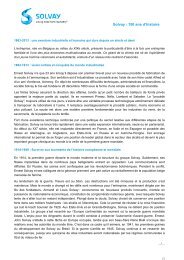solvay_live243_p02a04 somEdito
solvay_live243_p02a04 somEdito
solvay_live243_p02a04 somEdito
Create successful ePaper yourself
Turn your PDF publications into a flip-book with our unique Google optimized e-Paper software.
Dossier SolvayInnovationTrophy2006<br />
42<br />
Long unknown outside the company, the Toyota way<br />
is a set of management principles that drive the company<br />
– and its people – to meet challenges and deliver growth.<br />
Toyota is a believer in training and development and<br />
everybody – bar none – is given training in ‘the Toyota<br />
way’, however long it takes.<br />
THE The TOYOT<br />
way<br />
Toyota is a company that has come a long way. In the<br />
early 50s, it was producing about 13 000 cars a year,<br />
almost equalling what General Motors were producing<br />
in a day. But times have changed, and this year, with a<br />
production of more than 600 000 cars in Europe, Toyota is<br />
hard on their heels. In 2003, they overtook Ford to become<br />
one of the top two car manufacturers in the world. Toyota in<br />
Europe has been given free reign to produce the cars that are<br />
required for the European market. Some can still be seen as<br />
‘world cars’ – the Corolla for example, but more and more, Reflect like the tortoise, act like the hare<br />
the development and design for the European market is done<br />
in Europe, by Europeans.<br />
Designed in Europe<br />
A technical R&D centre is situated near Zaventem airport<br />
(Brussels/Belgium), with the aim of producing one totally new car<br />
every two years. The centre – getting bigger and better all the<br />
time (two new buildings have recently been opened at the cost of<br />
EUR 75 million), is already the proud father of the Avensis and<br />
the Yaris. Everything above the platform is developed here – exterior<br />
design, electronics etc - while the chassis and the motor are<br />
developed in Japan. For Colin Hensley, General Manager, R&D<br />
External Affairs & Communication at Toyota Europe, “it is a<br />
remarkable system. A project manager – the chief engineer - is given<br />
the task of bringing a team together, to deliver the new car on time,<br />
and within budget. The specifications of the car have been<br />
pre-defined by the marketing depar tment, and the vision<br />
of the general management. For example, when the Prius<br />
was first being thought about, the inspiration came from<br />
the President at the time (1993). He wanted a car that would use<br />
half as much fuel as any current car that Toyota produced. This was<br />
a major challenge that demanded a radical rethink of how cars were<br />
powered, and as the saying goes ‘you can’t take incremental steps,<br />
and expect exponential results’. So the resulting car, with a hybrid<br />
motor, was a project developed from the bottom upwards – bringing<br />
together parts in a new way, and the whole concept had to be created<br />
in function of the challenge”.<br />
Many hours are spent discussing new projects so that everyone is<br />
on board, and singing to the same hymn sheet. Each decision is<br />
thought about and discussed and all alternatives – and their consequences<br />
- are considered. But once decisions are made, the onus<br />
is to get the work done quickly. There is constant development in<br />
all aspects of car production, so the pro-ject manager can pick and<br />
choose from ideas from a shelf system. These ideas have been<br />
worked on through a system of continuous improvement (kaizen)<br />
– a process whereby engineers have looked at a problem, and<br />
thought of a better way. This too, is part of the Toyota way of<br />
doing things.<br />
Five steps to problem solving<br />
Toyota personnel don’t wait for something to go wrong. Instead<br />
they fix it before it becomes a problem. They have a straightforward<br />
process to improve products, production or safety.<br />
• Identify and clarify the problem<br />
• Look clearly at the current situation – what are the facts?<br />
• How will we measure success? What is the target?<br />
• Ask why – five times? What is the root cause of the problem?<br />
• What counter measures can be considered to solve the problem?<br />
This is followed by a structured plan of execution, checking and<br />
standardisation. This methodology has the added advantage of<br />
being the same throughout the organisation – whether in Japan, the<br />
USA or Europe. On top of that, there is a requirement to be brief


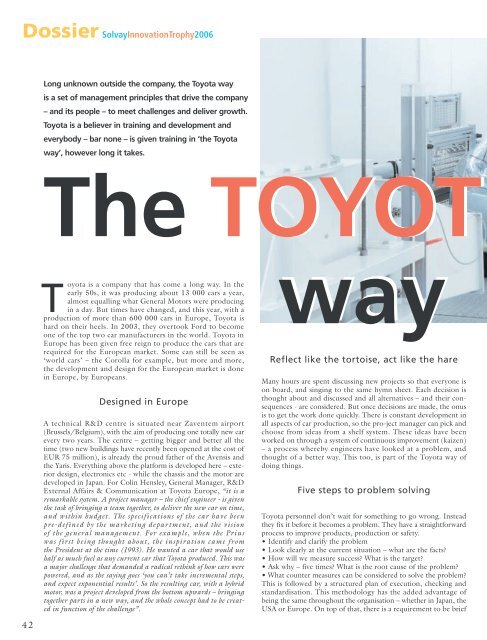


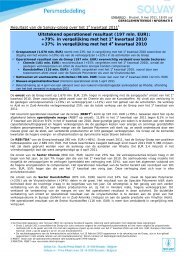

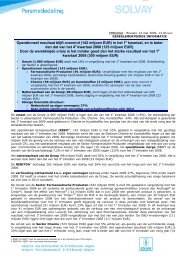
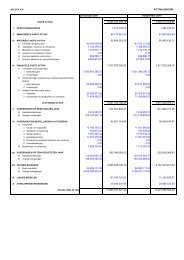


![PROC.1 [LETTRE] - Solvay](https://img.yumpu.com/16585746/1/184x260/proc1-lettre-solvay.jpg?quality=85)
